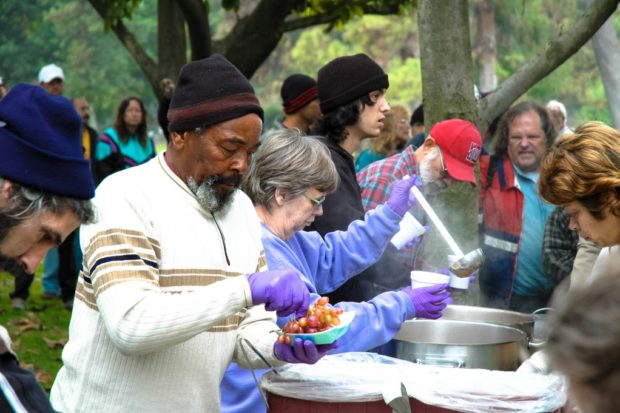
By Phil Erro
For many years, the need for food among Fresno’s hungry residents has far exceeded supply, but it was not known how much food was actually needed. That has changed. Thanks to the 2014 Fresno Hunger Report, it is now known that 26,100,000 pounds of food will be needed in 2015 to adequately nourish more than 64,000 hungry people in Fresno.
Starting in June 2014, Fresno Hunger Count (FHC) deployed 40 surveyors who conducted more than 42,000 one-on-one, door-to-door interviews with heads of households. They used paper questionnaires to be sure they asked the same food shortage questions every time.
More than half of the respondents, 21,388 to be exact, said they had experienced food shortages in the previous 12 months. Each household had an average of 3.01 members, which means there are more than 64,000 hungry people in Fresno. Eighty percent of the hungry households told the FHC what kinds of food they needed each month. The FHC tallied their responses to determine that they would need 26.1 million pounds of food in 2015 to have an adequate diet.
The FHC surveyors canvassed 75 Census tracts throughout the city of Fresno, the county islands and southwest Clovis. They went to mobile home parks, apartments and houses in neighborhoods where the median income was 200% of the federal poverty level or less. The survey area included Pinedale north of Herndon Avenue, Fresno and Clovis south of Shaw Avenue.
The FHC surveyors were trained not to lead interviewees toward certain answers, not to skip questions and to record responses after asking each question. In the field, team leads reviewed questionnaires and had surveyors circle answers of questions they had asked but had not circled the responses to and correct inconsistencies in the way they recorded answers to ensure that valid food shortage data was collected.
Team leads also made sure that surveyors wrote the addresses of each respondent correctly and legibly. The FHC data entry personnel flagged questionnaires that were incomplete, contained contradictory information or had nonexistent addresses. Deficient questionnaires were returned to surveyors for correction. The data processing center at the Geography and Planning Department at California State University, Chico, or GEOP for short, also flagged problematic addresses and rejected addresses (and questionnaires) of households located outside the survey area.
The FHC used a Web-based geographic information system (GIS) hosted by GEOP and ArcGISoline.com to input data from interviews into a secure database according to street addresses. This enabled the FHC to retrieve food shortage data from the database by location so that the number of hunger responses on any city block could be represented on heat maps.
The heat maps show the degree of hunger throughout the survey area and are easily accessed on the FHC Web site. There are 75 heat maps, one for each Census tract. When Web site visitors hover their cursor over a particular Census tract, the heat map for that Census tract will pop out and display tones of red to indicate the intensity of hunger.
Text also tells the viewer how many households the FHC interviewed in that Census tract, and a table shows how many pounds of proteins, carbohydrates, fats and fresh fruits and vegetables are needed each month in that Census tract. Food banks and other relief food distributors can use this data to purchase the right food in a timely manner and deliver it where and when it is needed. The heat maps provide the visual images to spot severe hunger immediately and at the same time provide the data needed to plan appropriate food purchases and deliveries.
The purpose of the FHC is to document the nutritional needs of people in Fresno so that the supply of food can be adjusted to match those needs. Currently, the amount and selection of food tends to be driven by the supply of food, whether it is the availability of USDA commodities or the delivery of hard-to-sell food from a supermarket chain.
The FHC is the first step toward filling people’s nutritional needs according to their need, not according to the supply of food. For more information, visit www.hunger-count.org. Once you grasp the scale of hunger and how it manifests itself, commit to help end hunger in Fresno.
*****
Phil Erro, native of Fresno, social justice activist and founder of Fresno Hunger Count. You can contact him at philiperro@ hunger-count.org or (559) 263-1575.

